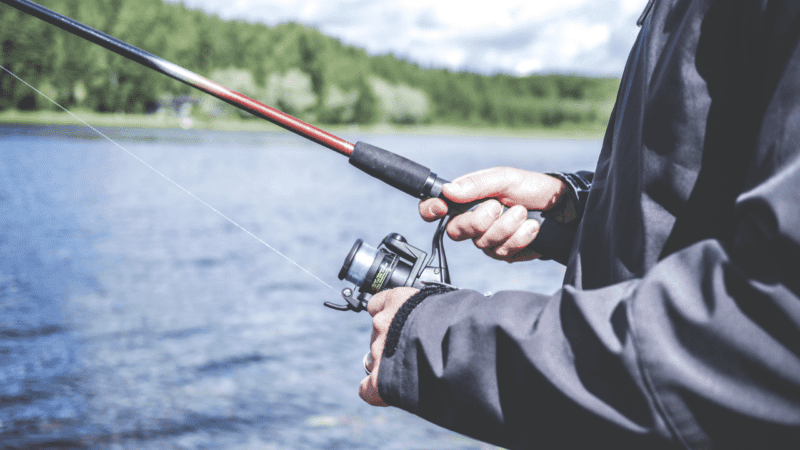Are you ready for some excitement?
Why not try your luck at inshore fishing. What inshore actually means can differ from each angler and the area that they are from.
There are many advantages to inshore fishing, such as only basic equipment is needed, a small boat will do the trick, and you can fish the same as you do with freshwater fishing.
Inshore fishing is great for the whole family, including younger kids who are wanting to learn to fish.
Doesn’t sound bad at all. Let’s find out more about this popular way of fishing.
Table of Contents
What Is Inshore Fishing?
Inshore fishing is a type of fishing that is done in water depths no more than thirty meters. The waters for inshore fishing are calmer, and the requirements for the fishing vessel are not as complex as offshore fishing.
What Types Of Fish Does Inshore Fishing Get You?
When you are inshore fishing, it is unlikely that you are going to make your famous catch.
You aren’t going to land any shark or a huge marlin that is left to offshore fishing.
You can, however, catch some high-volume, feisty fish. A popular catch for inshore fishing is the redfish. They can be caught on lures and bait. They are an active feeder. Flounder, snook, black drum can also be caught from those who fish inshore.
If you want a strong fighting fish, and you enjoy a challenge you can go the tarpon.
The tarpon might not be the best table fish, but it is good for those fishermen who want a challenge. If you are looking for an elusive species, consider the bonefish.
This is a fish that requires stealth and patience from those hunting it. This fish can be found in shallow flats.
What Kind Of Boat Do You Need?
When it comes to organizing the type of boat, you will need to look for a small boat that will be able to access the small inshore areas.
A fishing boat that is 18 to 25 feet long is a good choice. Having a boat this size will allow you to maintain good stability and is easy to manage. When you are offshore fishing, you need to allow a full day or even several.
Inshore fishing means you don’t require all the sophisticated stuff like a sleeping area and a bathroom.
The main requirements for your boat are decent rod storage and a baitwell plus storage areas. Adding a canopy is a good idea if you are choosing to go out on a hot summer’s day.
You also might like to add a fridge if you plan on enjoying some drinks or snacks with people on board.
What Are The Tackle Essentials?
There are several essentials that you want to make sure you are never without when you are inshore fishing:
A medium-action 7-foot spinning rod that comes with an 8 to 15-pound line.
The 7-foot rod is preferred by many inshore anglers as they have the extra length, so you are able to gain more distance on your cast.
If you want to prevent spooking the fish when you are fishing in shallow waters, this is a good choice.
Working with a braided line is important for flat inshore fishing or when you are in the backwaters.
Having a thinner line means you can get more on your reel and be able to cast further.
The Braid line also holds well against the mangrove branches, dock pilings, and oyster bars.
Circle hooks in the sizes of 2/0, 3/0, 4/0 are a good idea when using cut or live bait.
This is because the hook’s shape helps it glide into the fish’s mouth down to the jaw, which will help lower the chance of you getting a gut hooking fish.
30 pounds fluorocarbon leader test material which will refract light when it is under the water.
This is near invisible to the fish. Fluorocarbon is very hardy and near abrasion resistance.
When you are fishing near structures like docks and mangroves this is a good choice to have.
The torpedo-shaped plug like a skitter walk or a zara spook is great for using as walking the dog method in the lower light conditions like dusk or dawn.
This is likely to attract a snook, trout, or redfish.
Is Inshore Fishing Better Than Offshore?
Inshore fishing is better if you are fishing with younger children or for those who are just beginners.
The inshore waters are a lot calmer, meaning you don’t get much sickness.
There is more casting than when you compare it to offshore fishing. This helps avoid the children getting bored. You don’t have the long time commitment like you do with offshore fishing.
Conclusion
Whether you are inshore or offshore fishing, they are both as good as each other.
If you are looking to take the kids out for the day for some fun or to teach them how to fish, inshore is your best bet.
Once you have got the hang of it, then you can move into offshore fishing.
If you are one to enjoy fishing on the land, then inshore fishing is the way to go. Inshore fishing you only need a few essentials and without the dedicated timeframe that offshore fishing needs.
Frequently Asked Questions about Inshore Fishing
Do You Need A Fishing License For Inshore Fishing?
Most times, you do need a fishing license, but this will depend on where you are fishing.
Are There Rules For What You Can Catch?
Some places will have a catch and release condition, so you catch, but you must release. Other places will have laws that you cannot take home fish that are under or over a certain size.

Hi, my name is Johanna and I am the owner of this blog. I am passionate about “The Great Outdoors” and write about my fishing, hiking, and camping adventures and share my knowledge with you.
